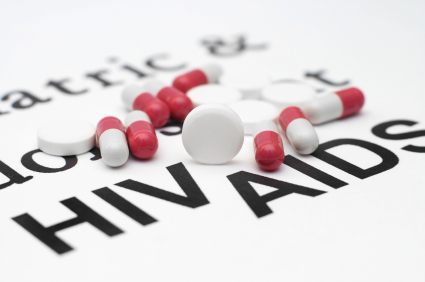Janssen, the pharmaceutical arm of Johnson & Johnson, is testing the vaccine on humans, for the first time in eight years since a pharmaceutical company last attempted an experimental HIV vaccine trial on humans. Researchers are optimistic that if results of the current human study are as good as the result in the non-human primate test subjects, then a larger scale clinical trial could begin within the next two years.
A study published in the journal Science, revealed that monkeys used for the new study received shots of the experimental vaccine and were then injected with SIV, which is very similar to HIV. A total of six injections of SIV were given to the monkeys to find the point where the vaccine would fail.
50% efficacy
The two-step vaccine not only protected half the monkeys, but their bodies produced antibodies that can be measured to show how well-protected the monkeys are. In step 1, the test subject is given a shot of a weakened cold virus. This allows the genes of HIV to enter the body. In step 2, the test subjects received a very pure form of an HIV surface protein. This causes the body’s immune system to strongly react to the invader.
Scientists are hopeful that the experimental vaccine is effective due to the combination of high exposure rate and the number of test subjects that did not get infected during the trial. One of the doctors involved in the study said that they are not certain the vaccine that is protecting the monkeys will protect humans.
Vaccine holds promise
But in a statement, Dr. Mary Marovich, who is Director of Vaccine Research at the National Institute for Allergy and Infectious Diseases, NIAID, described the new AIDS vaccine as promising. “I do think that their results are impressive. Even protecting half of the people who are exposed to the virus would be a major accomplishment. It could ultimately end the epidemic when you use it in combination with other measures.” The relationship between HIV and SIV is complicated. Only people become infected with HIV and the same disease is not caused by SIV that HIV does. However, they are sufficiently close that they can test vaccines with them and researchers said that the SIV used in the studies was more virulent than what was used in vaccines studies previously carried out. The researchers also used “SHIV” – a combined virus using HIV and SIV. The vaccine protected more than 40 percent of the monkeys injected.
Researchers have been frustrated for 30 years trying to find an AIDS vaccine. Worldwide, HIV has infected close to 78 million people, with over 39 million already dead and 35 million people have AIDS. Of those 35 million, 3.2 million are children who received the virus through their infected mothers. With an estimated 3.4 million persons living with HIV, and more than 60,000 babies born with HIV annually, Nigeria has the 2nd largest burden of HIV in Africa after South Africa
On the future of the experimental vaccine, Vice President of the development of viral vaccines at Janssen, Hanneke Schuitemaker, said the company recognises that work should be on vaccines that can prevent infectious disease. Scientists chose monkeys for the trial, because their immune systems are similar to humans. Also, HIV has been linked to SIV, which is carried by monkeys. HIV is actually a genetic mutation of SIV.
This post first appeared on Vanguard newspaper and Published online at HealthNews Nigeria

 After recorded success in monkeys, some African countries are hosting HIV vaccine trials. The success of an experimental vaccine trial with rhesus monkeys is motivating a pharmaceutical company to undertake experimental HIV vaccine tests in Thailand, East and South Africa, and the United States of America US, with 400 healthy participants taking part in the first phase of the trials.
After recorded success in monkeys, some African countries are hosting HIV vaccine trials. The success of an experimental vaccine trial with rhesus monkeys is motivating a pharmaceutical company to undertake experimental HIV vaccine tests in Thailand, East and South Africa, and the United States of America US, with 400 healthy participants taking part in the first phase of the trials. 





